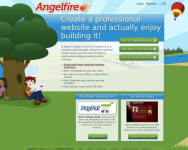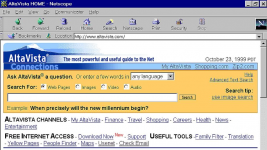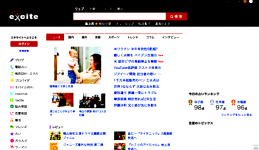
How many of you were teens around the 90s? I was, were just getting amazed by the development of the internet and the web at large. At the tie, we could not even differentiate the world wide web from what the internet was. The 90s to early 2000s marked a period of rapid development and inventions in technology. Silicon Valley was famous at the time for launching one amazing technology from the other.
In the same light, website and web technology were on the rise around the same period. Yes, the most prominent were Google, Yahoo, and Microsoft. This was the age of dial-up connection, and YouTube was not still a thing; therefore, most of the knowledge we had was from reading physical books and browsing the internet.
I remember learning basic coding and HTML skills so that I could tweak my Myspace landing page. This was an exciting time, and it seems like magic, entering a bunch of codes into a compiler, running it, and seeing the magic as it brings up a user-friendly output (at least it was user-friendly back then). Such hard-coded pages were full of glitters and running texts (macros). The pages were heavy, unstable, and full of codes thrown here and there. But since it was the in-technology at the time, we all found it fancy.
Ohh....how I miss those days. Do you have a recollection of those good old days? Did you get a chance to design your first website? I remember my first two hobby websites were on Angelfire and Geocities. There were many other free web hosting sites at the time, including:
- Tripod.com
- Lycos
- Angelfire
- Prodigy
- Xoom
- Talkcity.com
- Homestead
- Geocities
- Fortune city
- VBulletin
- PhpBB
- Yahoo
- Webs.com
- Netscape
- Excite
- 20M
- 50M
- 100M
- 8M.com
- Freeservers.com
- Freewebs
Let us dig deeper into these sites and how unique each of the free web hosting sites was. These were the days before even WordPress or discussion boards became a thing. Yes, they were still in existence, but the look and feel of the free web hosting sites just made our day back then.
Top Free web Hosting sites of the 90s to early 2000s.
Well, there were a bunch of free web hosting sites and shared platforms back in the days. I didn’t get a chance to use all of them because at some point, it became highly cumbersome to have tens of websites online. You could hardly manage all of them.
Here are some of the notable free web hosting sites of the 90s through to the early 2000s:
1. Angelfire
I must admit that Angelfire was among the best free web hosting sites I used back then. I am not sure why I preferred it to the others; I guess it is simple and easy to use. It was not full of nuts and bolts—fewer icons on the admin panel and an easy-to-understand user interface.
It is probably the one free host that I used longer compared to the others. Plus, the sites I made on Angelfire were much more serious than the hobby sites we used to make with my classmates.

Anyone who wanted to say something on the web back in the 90s had to build their page from scratch. This was, of course, before the simple blogging social sites like MySpace and Tumblr came into existence. Millions of web enthusiasts did create their sites back then on various free platforms. Teens (like me then), and the young Mark Zuckerberg, had hosts like Angelfire to post their thoughts free of charge. The fact that it was free was the sweetest part of it. Who doesn’t enjoy free things?!
Anglefire was launched in the mid-90s (1996); it is still open to date but not as active or highly regarded as it used to be back then. It began as a combination of web hosting and medical transcription service. Currently, it is a web hosting service owned by Lycos. Finally, the site discontinued the transcription service and instead concentrated on hosting websites and providing paid memberships. The site was acquired by WhoWhere in 1997, based in California, then purchased in 1998 by Lycos search engine company.
Since Lycos was already in the business of free website hosting with ads through its acquisition of Tripod.com, Angelfire was changed to also match Tripod, with the inclusion of more ads and increased disk space. Angelfire provided paid mail on the @agelfire.com domain until May 200, but only webmail was replaced with Lycos domains for premium users. This functionality is available through the @agelfire.com domain.
In September 2010, Angelfire was majorly revamped. The Angelfire website builder is now promoted as the primary Web publishing tool. This has been re-coded entirely using HTML5 markup. The traditional Web Shell tool remains active but can only be used by premium members.
2. GeoCities
Surprisingly, I still have some of my GeoCities accounts, now under Yahoo. The addresses redirect correctly. Of course, I don’t update them anymore, but anytime I get an inactivity notice, I try to do some minor tweaks on the sites to keep them alive.

Back then, I could use javascript or frames to break out of the ads that were forced on the free sites. At that time, Java Script was a new and amazing piece of technology on the WebSphere. Those simple scripts made from Java make your website look pretty unique and stand out from the rest. I had learned my way around some proprietary software like Dreamweaver and VB script; therefore I could do some simple codes that added life to the free sites that allowed external codes.
The look and feel of Geocities-based websites on archives.org just bring back the nostalgic feeling of all things the 90s. Back then, we were amazed by the little things because everything was new at the time. Almost every day, something new and unique would come out, and guys could not wait to have it on their websites. This made sites look all stuffed, messy, conspicuous with funny color management. No one had the skills of arranging the colors to come up with something good. We could throw the colors and décor whatever they fit.
Back in the early to mid-90s, anyone who wanted some web presence went to GeoCities. You wouldn’t know how you and your neighbors could manage the whole concept of the internet culture and divide content into “neighborhoods in the first place. It was like sci-fi back then. In 1999, Yahoo! Got 3.5 billion dollars of the business, which at the time seemed like a good idea. Until finally, sites like MySpace came with an even elaborate and concept. The once-popular, once almighty Geocities was wiped from the face of the internet slowly into its death bed.
GeoCities was launched in December 1995 and ran successfully through the early 2000s, until October 26th, 2009, when it took a final bow. It began as a web hosting service, allowing users to create a custom landing pages. Until its end, it was running as a hosting service owned by Yahoo.
3. Lycos

Lycos was another search engine web portal similar to AltaVista and Excite, which became a website for everyone in the early 90s when users first began to be awed and mesmerized by the internet's working. Unlike the other free web hosting services, it was purchasing smaller assets from the start instead of being acquired andd is still in business today after many years of changing hands.
Lycos was launched in 1995 and is still in operation to date. Lycos began as a search engine and web portal. Currently, Lycos is still a search engine, web portal, social networking, and a famous internet company based in India.
Lycos is short for Lycosidae, which is translated in Latin to mean Wolf Spider. The development of Lycos started back in 1994 as a research project by Michael Loren Mauldin (the University of Carnegie Mellon in Pittsburgh). CMGI’s venture capital funding for Lycos Inc. was created with approximately USD 2 million. In the 1995 era, Bob Davis became the Chief Executive Officer and the first employee of the company to develop a Web Portal under Bill Townsend's leadership, who served as the Vice president of the advertising section. In the 90s, Lycos enjoyed several years of expansion and, in 1999, became the world's most-visited online destination with a worldwide presence in more than 40 countries.
Among the companies that Lycos has acquired over time include:
- Angelfire, which is the branch of Lycos that offers free web hosting services, blogging, and web publishing.
- Insiderinfo
- Tripod.com is currently a property of Lycos that provides free web hosting, blogging, and web publishing services.
- Wheather Zombie, a branch of Lycos that deal with the weather forecast, with the zombie theme, via AccuWeather.
- Whowhere.com a search engine for people. This is an awesome idea that is still being worked on by Lycos (pun intended)! That is the message that the landing page has been showing for years one.
- Lycos Chat – which is a photo chatting forum.
- Lycos domains – which deals with buying and selling domain names and hosting.
- Lycos Mail – previously called mailcity.com, provides email services at a premium rate.
- Lycos weather – for weather forecast and related news.
- Lycos Yellow pages – for searching addresses and physical location of businesses and services.
4. Tripod.com

Tripod was a fantastic service. I remember using it to host the template images for my eBay auctions. I don’t know the login details for my sites; I haven’t checked them in years. But the last time I checked, it was still intact! Indeed, the internet never forgets. You don’t even need the WayBackMachine for this one.
For a long time, I was on Tripod until the free storage capacity was dropped and advertisements were pumped onto the landing page like crazy! Currently, I have redirected all the traffic I had from those sites to my main premium domains. But they were an excellent way to get started with web design and hosting.
Tripod understood at an early stage what firms such as Facebook and Tumblr would make a killing out of. And that was the youth. It began as a service that provided personal website building services “by and for college students.” It soon became apparent, however, that college students simply don’t pay for services and that they could find everything they are looking for on the internet. This led to its downfall. Tripod was launched in 1995 and is still in operation, although it is offering different and diverse services. It began as a personal free web hosting service. Currently, Tripod still offers free web host services but under the new ownership by Lycos.
5. Homestead
Homestead was among the few free hosting portals that I could use a decent What You See Is What You Get (WYSIWYG) kind of builder. It was easy to have your website up and running. Just a few tweaks, drag and drop interface, and you are good to go.

Interestingly, the sites I made on the homestead are still accessible on archives.org. Ok, they don’t go many pages deep, but at least I can see the ugly stuff I was designing back then. In the 90s, it was all about getting the word out there, not so much on the looks and feel or arrangement of the pages. I find the web design industry has evolved rapidly. Today it is more about simplicity and minimalism. Back then, a home page could have glitters, strobe kind of lights, with luminous colors here and there.
6. AltaVista

Do you remember AltaVista? Probably among the most prominent names of free web hosts around the mid-90s to early2000s. After the internet boomed in the mid-90s, there was a need for searching content on the internet since it slowly became a messy jungle of information overload. Search engines started coming up from everywhere, and AltaVista once had the most extensive indexes and advanced search technology.
However, the worldwide web was much more competitive at the time, and its fame and popularity started dwindling. Altavista has been sold and resold several times until 2013. It was launched in December of 1995 and ended in July 2013. It began as a search engine but couldn’t keep up with Google’s advancement. The platform offered the users some hosting services under their sub-domain. Once you were a member, you could be issued a hosting platform and some basic web design front end for customizing your site.
Brief background of AltaVista.
AltaVista was a 1995 Web-based search engine. In 2003, Yahoo! bought it, which kept the name, but which based the AltaVista searches on its engine. It was one of the most commonly used early search engines before Google came up. AltaVista gave up on July 8th 2013. Yahoo! Shut down the service, and the domain has since been redirected to the Yahoo! search engine.
AltaVista is made of two words for ‘high view’ or ‘upper view’, which Is translated in Spanish as Alta + Vista. Researchers developed it from Network Systems Laboratory and the Western Research Laboratory at Digital Equipment Corporation. They attempted to provide services to facilitate the search for files on the network. Paul Flaherty created the original concept along with the web crawler and indexer Louis Monier and Michael Burrows. The name AltaVista was reflective of the surrounding of their company office in Palo Alto, California. On December 15th, 1995, AltaVista launched publicly as an internet search engine.
AltaVista offered loads of other free services, like the Babel Fish, which was a web-based translation machine program converting text or web pages from one language to another. Yahoo later acquired this! and subsequently redirected to Bing’s translation services. AltaVista also offered a free email service that ended on March 31st 2002 with over 400,000 registered users, out of which over 200,000 were active users.
7. Excite
Excite was one of the top search engines (also known as web indexing sites), which grew exponentially in the early 90s. It has become what we are now calling a content hub and was once one of the most visited websites on the internet.

Photo Courtesy: Wikipedia
At the end of the decade, during the big buble days, it fused with a new venture sponsored by all cable ISPs – a 6.7-billion-dollar deal which later was considered a disastrous merger in the history of the web.
Excite (often written as eXcite) was launched in 1995 by an American web service provider that provided a variety of content, including news, weather, email, IM, stock quotes, and customized landing pages for its users. Mindspark Interactive Network, Inc. and Excite Japan Co., Ltd are currently in charge of operations. American Excite has for a while been a personal landing page called My Excite. Excite also has an email service. A new account could not be opened, but in 2019, the services were up and running again.
The original company Excite was founded in 1993 and went public three years later. Excite was one of the internet’s most renowned brands of this decade and was the sixth most visited website by 1997 and fourth by the year 2000 on its Excite.com domain name and portal page. The business merged with broadband supplier @Home network but failed in 2001 when they went bankrupt.
Excite's portal and services were bought on iWon.com and then to Ask.com, But later the popularity of the website fell tremendously. The International Data Group paid 80,000 USD in July 1994 to establish an online service. In January 1995, the project received the first round of USD 250,000 as backing for the project. And over USD 1.5 million over ten months from Vinod Kholsa, who was a student at Stanford and a partner of venture capital company Kleiner Perkins Caufield a& Byers. Soon afterward the additional USD1.5 million of funding was introduced by Geoff Yang from Institutional Investment Partner, and in October 1995, Excite was formally released.
8. FreeServers.com

Photo Courtesy: Whtop.com
Freeservers had several sister websites to support the ever-increasing number of people who wished to create free sites back then. The other sister sites to Freeservers included 8M.com
These sites were the giants of Web.10 back then. Before the coming of the likes of WordPress, Joomla, DotNetNuke, Squarespace, etc. (Web 2.0 as we know them today). It was just around the 90s that social media was catching up. Therefore, people were yet to be distracted from the mainstream website in favor of social media. Plus, around this time, Android and iPhone APPs were not a thing yet. If anything, the Symbian OS and Blackberry OS were the leading operating systems for mobile phones.
Years before the first dotcom bubble, even before Facebook and Twitter, even before Friendster and MySpace, eons before Google eyes were glamming, the free web hosting sites were the thing. We called them Web 1.0, or just the World Wide Web of the 90s! This was the dawn of our now pervasive digital era for someone born and raised in the late 80s through the 90s to the early 2000s.
Unfortunately, these WWW giants of the past have since been replaced by the more flexible and advanced platforms today, including Facebook, Twitter, Instagram, WhatsApp, Telegram, Signal, Google, etc.
Final Thought
Free web hosting, currently WEB 2.0, is still a thing. Only that platforms like WordPress have taken a considerable chunk of the market share. WordPress is presently the leading Web 2.0 company with millions of websites under its sleeves.
Although people are now considering investing in buying dedicated domain names for themselves, those who are just starting still depend on the free web host services. Personally, I am a fan of free web hosting services, especially when I am testing out a concept. It is safe to use the free hosting services to see how your target audience will respond to your idea before developing it further or launching it officially.
Did you ever develop a website using free hosting platforms? Share your experience in the comments below. Which was your favorite platform?


